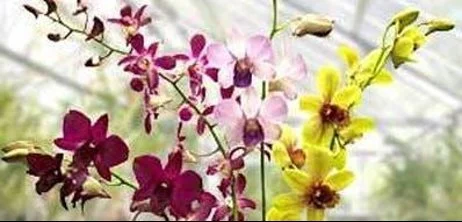From the AOS - Monthly Checklist for November and December
The American Orchid Society is a horticultural society that promotes and supports the passion for orchids though education, conservation, and research. This month Bridget shares tips from AOS contributors Ned Nash and James Rose to care for your orchids in September and October, and upcoming programs from the AOS.
By Bridget Kerans, American Orchid Society Representative
There were so many new faces I met at the IOS Fall Show 2025, and I hope everyone enjoyed themselves as much as I did. The Member’s Table was phenomenal, it never ended. Each time something was purchased, it cleared the way for more that were hidden or brought up to be sold. These are probably my favorite tables to browse, and I’ll tell you why.
When I first started out with orchids, I found myself repeatedly buying the same plants in bloom, but was never able to make them bloom myself. At some point I realized that I could buy members’ plants, which are varied, and see if I could get those to bloom and save some money. I got quality plants at a great price and started asking the growers what they were doing. I have now gotten some to bloom, discovered other plants, both orchid and non-orchid, and love the surprise of what will be available each time. I’ve even created “wish lists” that were easier to fill from the members’ table than from the vendors. They have gotten me to try different plants that I normally wouldn’t in the past. I hope everyone checks out the member sales tables at the spring and fall shows. We have so many fantastic orchid growers!
Monthly Checklist for November and December
Cattleya — Growers of just about every level of expertise will have begun to notice autumn conditions by now. Days are becoming shorter, hence cooler; the sunlight has less intensity as a result of the sun's lowering angle, nights are longer and generally cooler. Plants are responding by slowing and ripening their growth in preparation for winter.
The first cultural change noticed should be a reduced frequency of watering, as the plants dry out more slowly. This is a function of both the reduced day length and lower temperatures, as well as the plants' slowing growth rate. Reduced water needs signal a reduced need for fertilization. Note that the key word is reduced, not eliminated. Feed less frequently and at lower dosage, but feed. Growths, made during summer's heat, and relatively soft and green, will be ripening -- hardening -- in preparation for a brief period of rest (in many cases).
Many of these ripening growths will have a sheath, presaging the coming winter or spring flowering season. In some cases, these sheaths will have been evident since as early as July. (Early sheath development does not mean early flowering on plants with winter-spring seasons.) You may notice that some of these sheaths are showing signs of yellowing. This is not abnormal. Autumn's more pronounced temperature fluctuation can lead to water condensation inside the sheath, hastening the normal process of senescence, so yellowing sheaths can be left on the plant only so long before they must be carefully removed to preserve the bud primordia within. Water condensation left unchecked can rot the bud primordia. The sheaths can be safely removed by slitting open and peeling down toward the pseudobulb.
Cymbidium ensifolium produces delicate flowers with a delightful citrus fragrance.
Cool-Growing Orchids— One can almost hear a sigh of relief from all of the cool-growers, from masdevallias to odontoglossums. As day temperatures decline, one can see a noticeable improvement in these plants. Shorter days and lower light levels do not seem to bother them. Repot before winter arrives.
Cymbidium — Finally we begin in earnest the main cymbidium season. Cymbidium ensifolium can give some early and fragrant hybrids, but it is now that the bulk of the crop will be flowering. The season lasts for about seven months, adding color to any collection. Miniature varieties will peak for the next three to four months. There are three important things to do: stake inflorescences ramrod straight for best presentation, watch for slugs and snails (especially just after a rain), and fertilize with a mild balanced formula regularly.
Oncidium crispin Complex— This is the season for plants in Oncidium section crispum from Brazil to shine. Extremely vigorous hybrids come in wide varieties of markings dominated with chestnut and brown and butter yellow. Give plants high light to produce strong upright inflorescences. The pseudobulbs should be plump, so do not let the plants dry out while they are in bloom. Later, plants will enter a dormant period.
Paphiopedilum— The flowering season for the "toads" or "bulldog" paphs is just getting underway. These cannot be grown everywhere, but where cooler summer nights allow their growth, there is no longer-lasting or more exotic display than these. Paphiopedilums are, in general, not heavy feeders, and it is especially important with this type to reduce nitrogen levels now for best flowering and spike length. Be watchful for water accumulating in the growth around the sheath, or for the late-season warm spell, either of which can lead to the sheath's rotting. As the spikes emerge, do not change the orientation of the plant toward the light, as this can lead to a crooked or twisted spike
While paphiopedilums rarely like to dry out entirely, water needs are significantly reduced beginning now. Overwatering at this time of year can quickly lead to root rot or erwinia problems. Now is the time to practice good sanitary practices in your greenhouse or growing areas, as pest and disease problems have a way of multiplying rapidly in the darker and more crowded conditions that generally mark the winter growing area. With paphiopedilums, especially, "cleanliness is next to godliness" and if the growing area is littered with old foliage, weeds and dying flowers, keeping the plants alive and flowering will be next to impossible.
Phalaenopsis — Shortening days and cooler nights are the signals for inflorescence initiation in phalaenopsis. In more northern climates, or on the west coast, growers have already begun to see the early inflorescences that may be ready for Christmas. In the eastern areas, nights in the greenhouse will now be in the low to mid 60s, depending on the thermostat setting, so the first of our phalaenopsis will not begin to bloom until Valentine's Day at the earliest.
A reduction in nitrogen levels will go a long way to giving the best possible spiking, as will a boost in potassium and phosphorus. In other words, a "bloom booster"-type fertilizer is definitely indicated in the next few months. Disease and pest problems are best dealt with now, especially as mealybugs hide in the bracts and flower buds. Once they have established themselves, they are difficult to eradicate, and flower damage or crippling results. Potential disease problems can be dealt with by the application of a copper-based compound to control/alleviate rot problems before they start. There is nothing more frustrating than to have shepherded your plants through a growing season, only to have them decline before your eyes.
Vanda falcata will thrive in cooler temperatures and produce graceful vanilla-scented flowers.
Vandaceous Genera— Whereas the general decline in temperatures is beneficial to cool-growing orchids, it is not for vandaceous plants. The only cold-hardy member is Vanda falcata. Orient your plants in such a way as to take advantage of as much light as possible. This can be a problem in northern latitudes. Reduce watering and feeding schedules..
The AOS thanks Ned Nash and James Rose for this essay.
Upcoming AOS Webinars
**Open to All**
Greenhouse Chat November 2025 with Ron McHatton
Thursday, November 4th, 2025
8:30 PM - 9:30 PM EST (7:30 PM – 8:30 PM CST)
Join Dr. Ron McHatton as he answers your questions about all things orchids. Please send your question and pictures to Sandra Svoboda at greenhousechat@aos.org by November 1, 2025.
**MEMBERS ONLY**
Greenhouse Culture and Greenhouse Technology with Manny Aybar
Wednesday, November 12th, 2025 8:30 PM - 9:30 PM EST (7:30 PM – 8:30 PM CST)
Greenhouse growing is a popular subject with Orchid Enthusiasts. Come listen to Manny Aybar, accredited judge in Texas, talk about what it is like growing in a greenhouse, the smart ways to place plants, and all the Tech that now is available to help you be a better grower!




